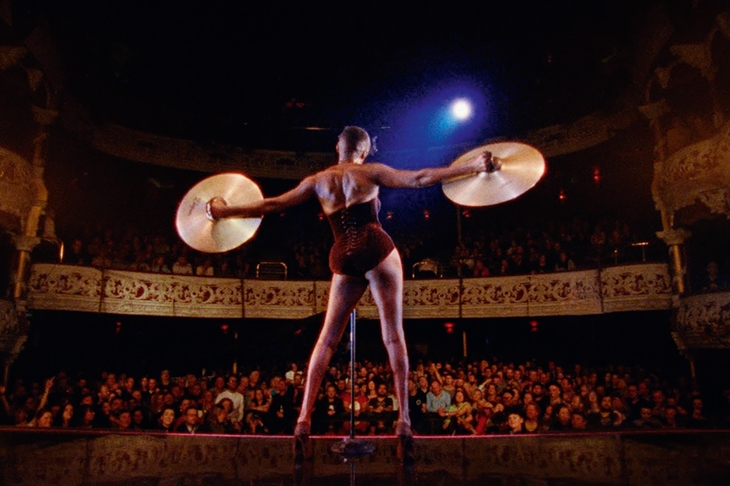In the first scene of this distinctly odd documentary, Grace Jones meets a group of fans, who squeal with delight at the sight of her and nearly pass out with excitement when they hear her speak. And that, I suspect, is the effect which the film confidently expects to have on the rest of us. OK, it seems to be saying, so you’re not going to learn how Jones got from the Jamaican childhood we see her revisiting to the globetrotting life we see her living now. OK, so there’s no structure, sometimes no clue as to where scenes are taking place or who the other people in them might be — and for quite a lot of the time she’s just pottering around not doing very much. But look! It’s Grace Jones!
In fact, about the only thing about Jones’s life to emerge with real clarity is how tough that Jamaican childhood was. When she was very young (although, characteristically, the film doesn’t tell us how young), her parents moved to America, leaving the children with their grandmother and her new husband, known as Mas P — a man who regularly and ferociously beat them for such crimes as watching TV, making them read aloud from the Bible as he did so. The rage this created, she tells relatives, continued into adult life: ‘I was playing out Mas P: that’s why I was so scary.’
Other scenes suggest that her scariness hasn’t entirely gone, now she’s approaching 70. (Several feature her shouting at length into various phones about how she isn’t ‘going to take this shit’.) But there are also moments of genuine warmth. Visiting Paris, she tells the father of her son that ‘you were the only man who made my knees buckle’, before holding their new grandchild with touching tenderness.
The trouble with the film is that while this is fine as far as it goes — particularly given that it’s interspersed with stirring live performances of Jones’s greatest hits — it surely needs to go much further. For one thing, anybody who doesn’t already know all about her (although the clearly smitten director Sophie Fiennes may find such a person impossible to imagine) will remain completely in the dark about the main events of Jones’s life. So how did she go from Jamaica to globetrotting stardom? The answer is that she didn’t. From the age of 13, she grew up in New York with her parents: a fact the film doesn’t so much as mention. Meanwhile, her modelling career, movie career and virtually all of her musical career are referred to only in the briefest of passing — which might almost be worse than not referring to them at all, because of how tantalisingly we’re left wanting to know more. Certainly, one reaction I had after seeing Grace Jones: Bloodlight and Bami was a strong desire to see a documentary about Grace Jones. (A second desire was to look up what bloodlight and bami mean, because the film doesn’t explain that either.)
Another obvious problem that Fiennes’s adoration has apparently blinded her to is that over the course of two hours, the thrill of seeing Jones pottering around not doing very much can wear off. For all its longueurs, the film leaves us in no doubt that she’s an extraordinary woman — few troupers can ever have trouped quite so indefatigably, or in such a wide variety of hats. But by the end we still have no idea how she became one.






Comments